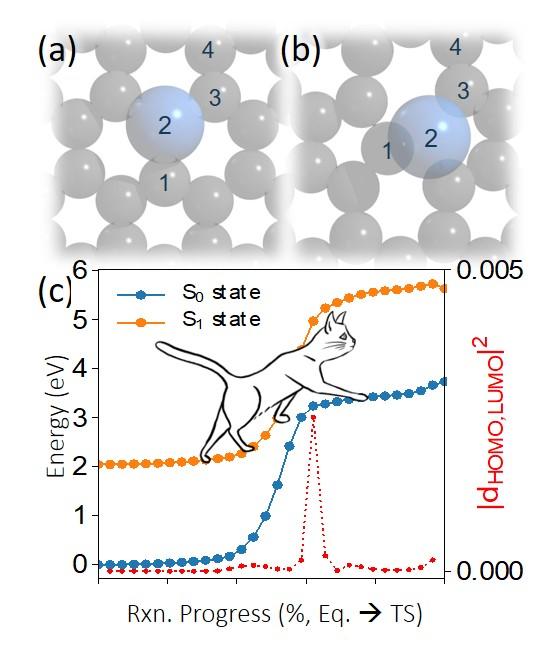
Scientific Achievement
Electronically excited Si-defect diffusion pathways were identified in nanographene, which present up to a 50% reduction in diffusion barriers relative to the ground state pathway and are accessible via inelastic electron scattering as well as optical excitation.
Significance and Impact
Competing nonadiabatic effects that favor/hinder the diffusion of substitutional defects in two-dimensional materials were delineated, clearing a path toward systematic efficiency gains for atomically precise defect manipulation techniques using focused electron beams.
Research Details
Developments by the authors, especially those in the NWChem linear response time-dependent density functional theory module, enabled calculation of inter-state transition rates due to both high-energy electron irradiation and nonadiabatic coupling encountered along the Si diffusion coordinate.
D. B. Lingerfelt, T. Yu, A. Yoshimura, P. Ganesh, J. Jakowski, and B. G. Sumpter, "Nonadiabatic Effects on Defect Diffusion in Silicon-Doped Nanographenes," Nano Lett. 21(1) 236-242 (2021). DOI: 10.1021/acs.nanolett.0c03587




